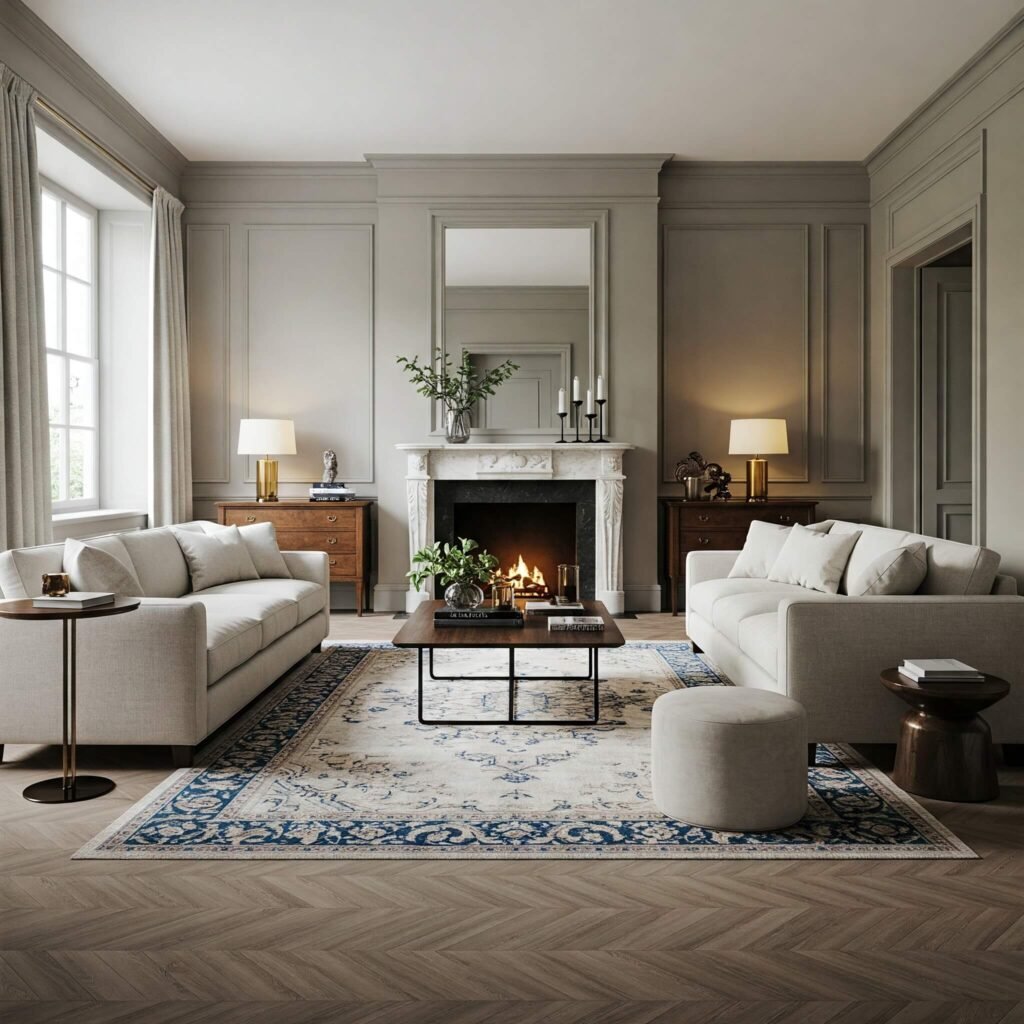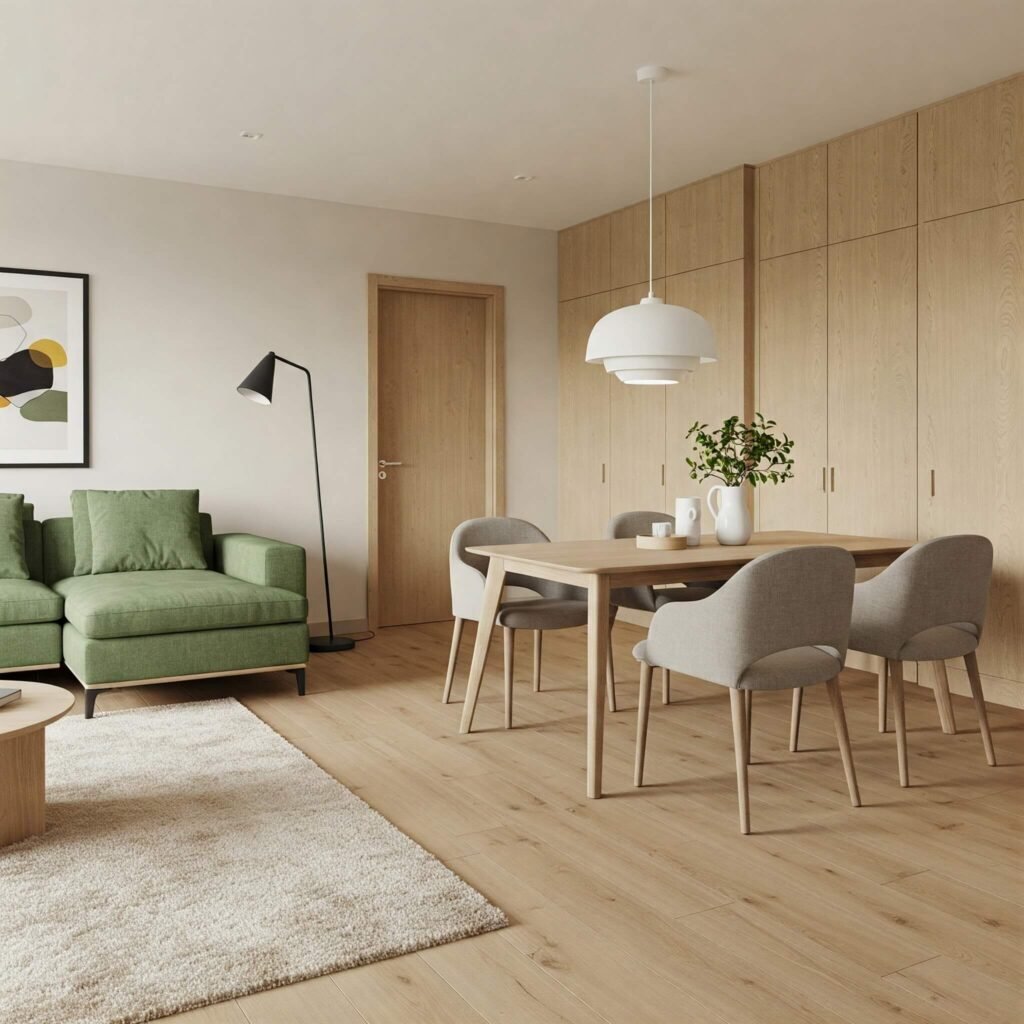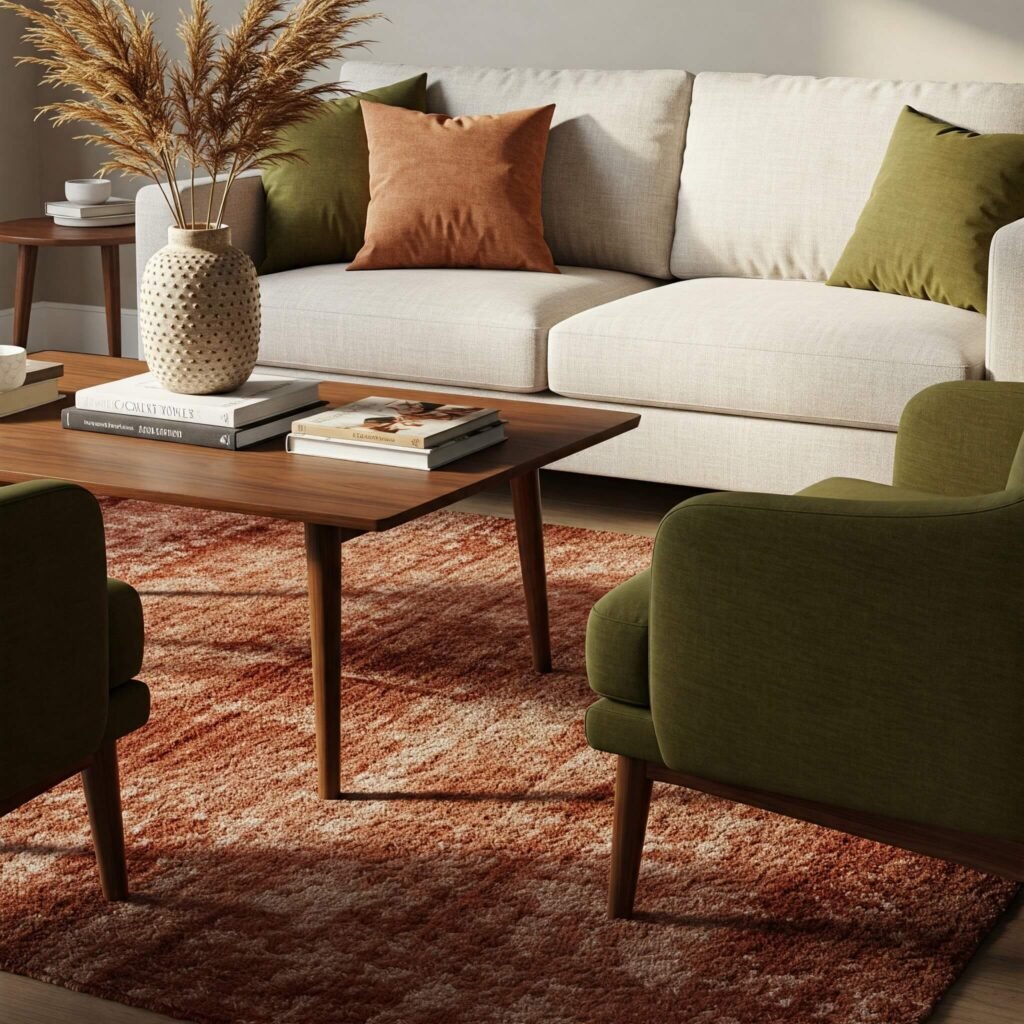Before you even think about moving a single sofa, first, take a good look at your room. Understanding its architecture is crucial for effective furniture arrangement.
- Identify Focal Points: Every room, without a doubt, has a natural focal point – perhaps a fireplace, a large window with a view, or even a statement piece of art. Subsequently, arrange your furniture to complement and draw attention to this point.
- Example: For instance, in a living room with a fireplace, orient your seating towards it to create a cozy gathering space.
- Consider Traffic Flow: Next, think about how people typically move through the room. Above all, ensure your furniture arrangement allows for easy and unobstructed pathways. In particular, avoid placing furniture directly in doorways or creating bottlenecks.
- Actionable Tip: Try to walk through the room as if you were a guest. Are there any awkward squeezes or obstacles?
- Measure Everything: This might seem obvious, yet it’s a step many overlook. Specifically, measure your furniture and the dimensions of your room, including window and door placements. This will prevent the frustration of realizing a piece doesn’t fit or overwhelms the space.

Zoning Your Space: Creating Functional Areas with Furniture Arrangement
In larger rooms, in particular, furniture arrangement can be used to create distinct functional zones without the need for physical barriers.
- Conversation Areas: To begin with, define a space for socializing with comfortable seating arranged to encourage interaction. Moreover, a rug can help anchor this zone.
- Example: For example, in an open-plan living and dining area, use a sofa, armchairs, and a coffee table to create a distinct conversation zone in the living space.
- Work or Study Nooks: Furthermore, designate a quiet corner with a desk and chair, perhaps using a bookshelf as a subtle visual divider.
- Dining Zones: Similarly, clearly define the eating area with a dining table and chairs, ensuring enough space for comfortable seating and movement.

The Art of Balance and Scale in Furniture Arrangement
Creating visual harmony is key to successful furniture arrangement. To achieve this, consider the balance and scale of your pieces.
- Balancing Large and Small Pieces: For instance, avoid placing all your large furniture on one side of the room. Instead, distribute visual weight by pairing a large sofa with smaller armchairs or by balancing a tall bookcase with a wider, lower credenza.
- Scale Matters: Moreover, ensure your furniture is appropriately scaled for the size of your room. Overly large pieces, for example, can make a small room feel cramped, while tiny furniture can get lost in a large space.
- Data-Driven Insight: Indeed, studies show that rooms with appropriately scaled furniture are perceived as more comfortable and inviting. (Outbound Link to a reputable interior design publication or study on spatial perception)
- Playing with Heights: Additionally, vary the heights of your furniture and accessories to add visual interest and prevent the room from feeling flat.
Interior Designer Secrets for Perfect Furniture Arrangement
Here are some insider tips for achieving that professionally designed look through thoughtful furniture arrangement:
- The Rug Rule: Generally, in seating areas, ensure at least the front legs of your sofas and chairs are on the rug to anchor the space and create a cohesive look. Ideally, all legs should be on the rug. (Outbound Link to a reputable home decor blog explaining rug placement rules)
- Coffee Table Placement: Subsequently, the coffee table should be within comfortable reach of all seated positions, typically about 14-18 inches away from the sofa.
- Layering Lighting: Furthermore, incorporate a mix of ambient (general), task (focused), and accent (decorative) lighting to enhance the mood and functionality of your furniture arrangement. In addition, table lamps and floor lamps can also fill empty corners and add visual height.
- Don’t Push Everything Against the Walls: Allowing some space between furniture and walls can, in fact, make a room feel larger and more sophisticated. This, in turn, creates a sense of breathing room.
- Embrace Odd Numbers: Finally, in groupings of decorative objects or even smaller furniture pieces like side tables, odd numbers often create a more visually appealing and dynamic arrangement.

Key Takeaways for Mastering Furniture Arrangement
- Plan before you place: To begin with, measure your space and furniture.
- Identify your focal point: Next, arrange furniture to highlight it.
- Prioritize traffic flow: Above all, ensure easy movement throughout the room.
- Zone your space: Similarly, create distinct functional areas.
- Balance scale and visual weight: Moreover, distribute furniture thoughtfully.
- Layer lighting: Additionally, enhance mood and functionality.
- Don’t be afraid to experiment: Finally, play around with different arrangements until you find what works best for you.
Mastering furniture arrangement is, indeed, an ongoing process. Therefore, don’t be afraid to rearrange and tweak things until your space truly feels like home. By applying these interior designer secrets, you’ll be well on your way to creating beautiful, functional, and inviting rooms that you’ll love for years to come.
































